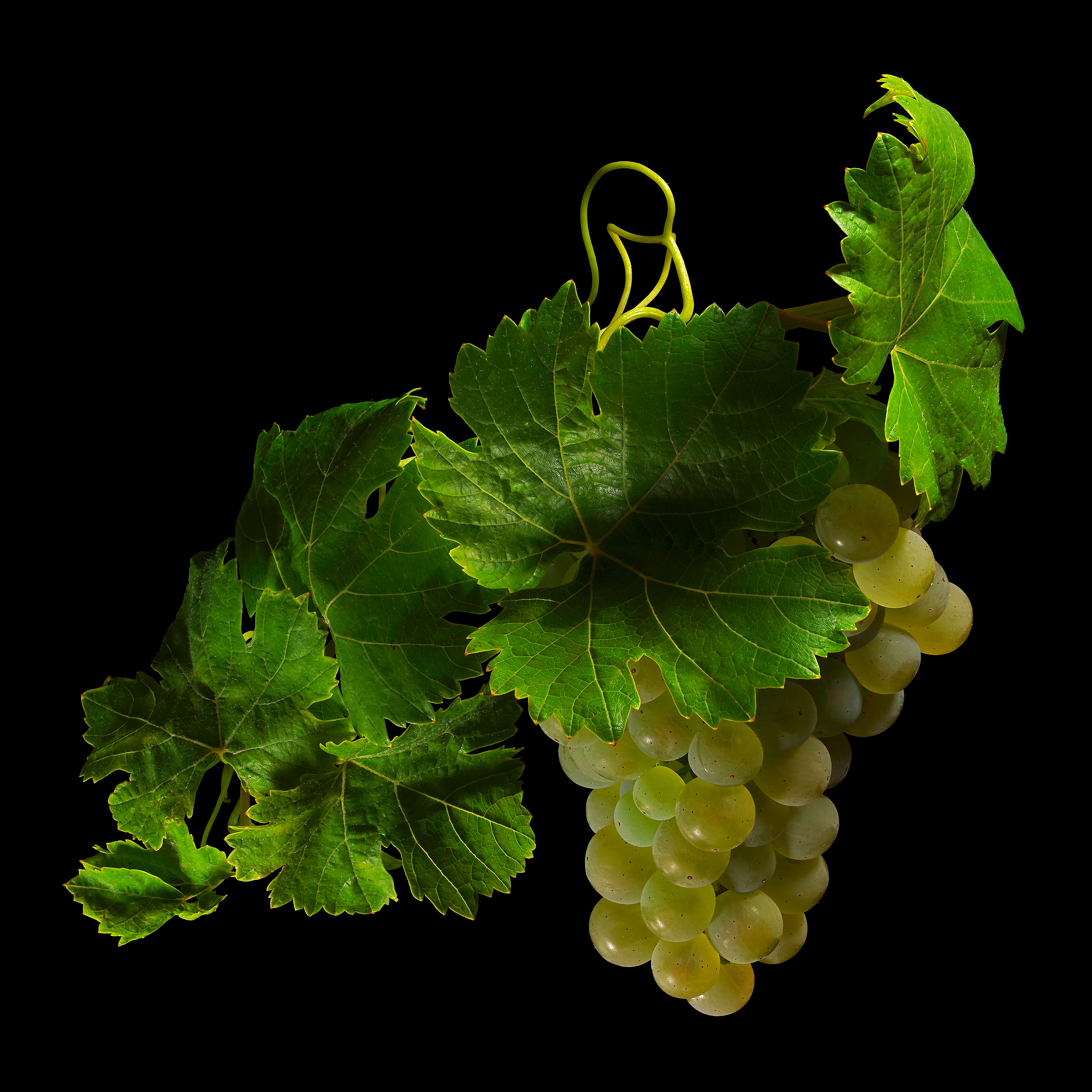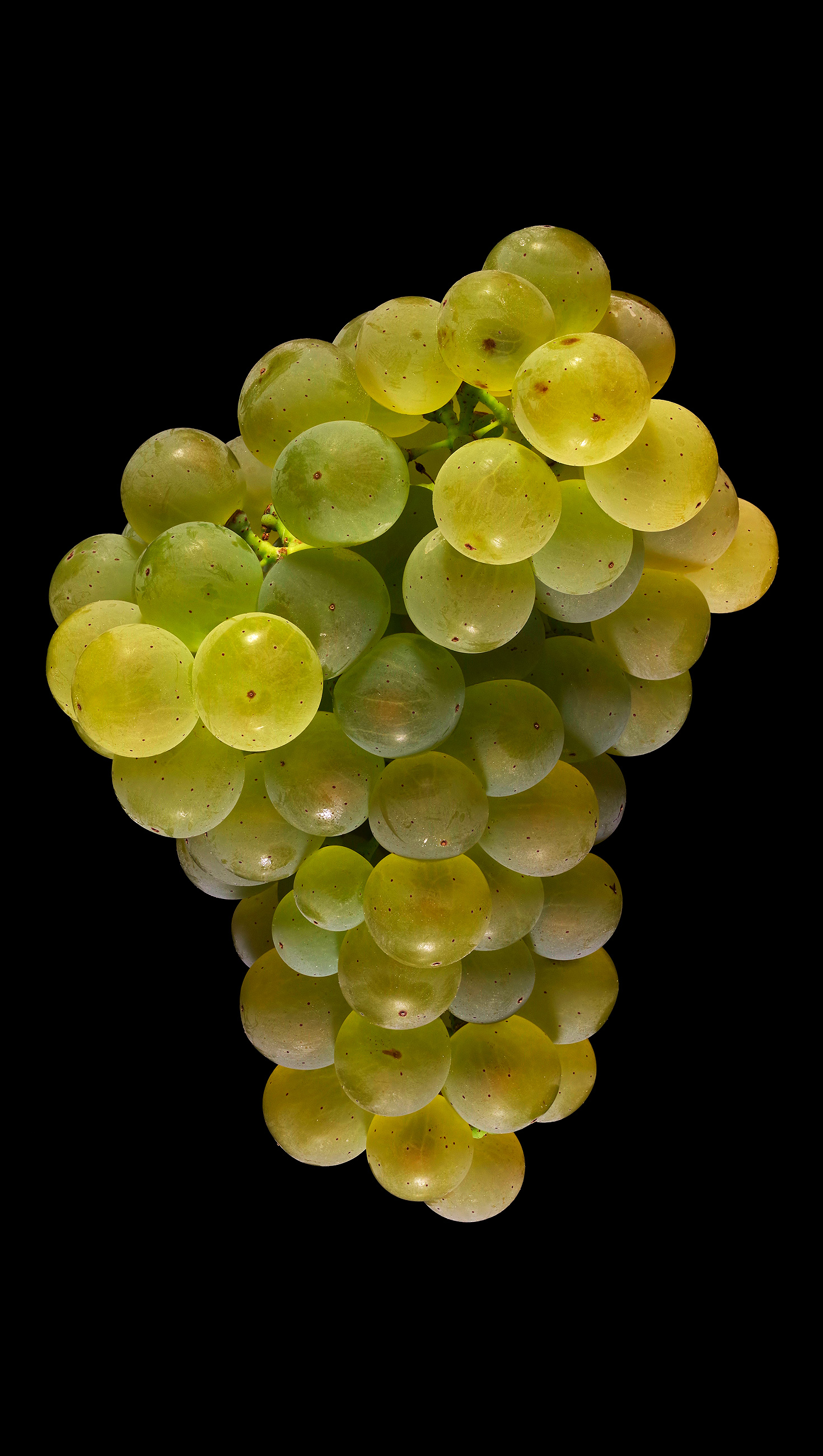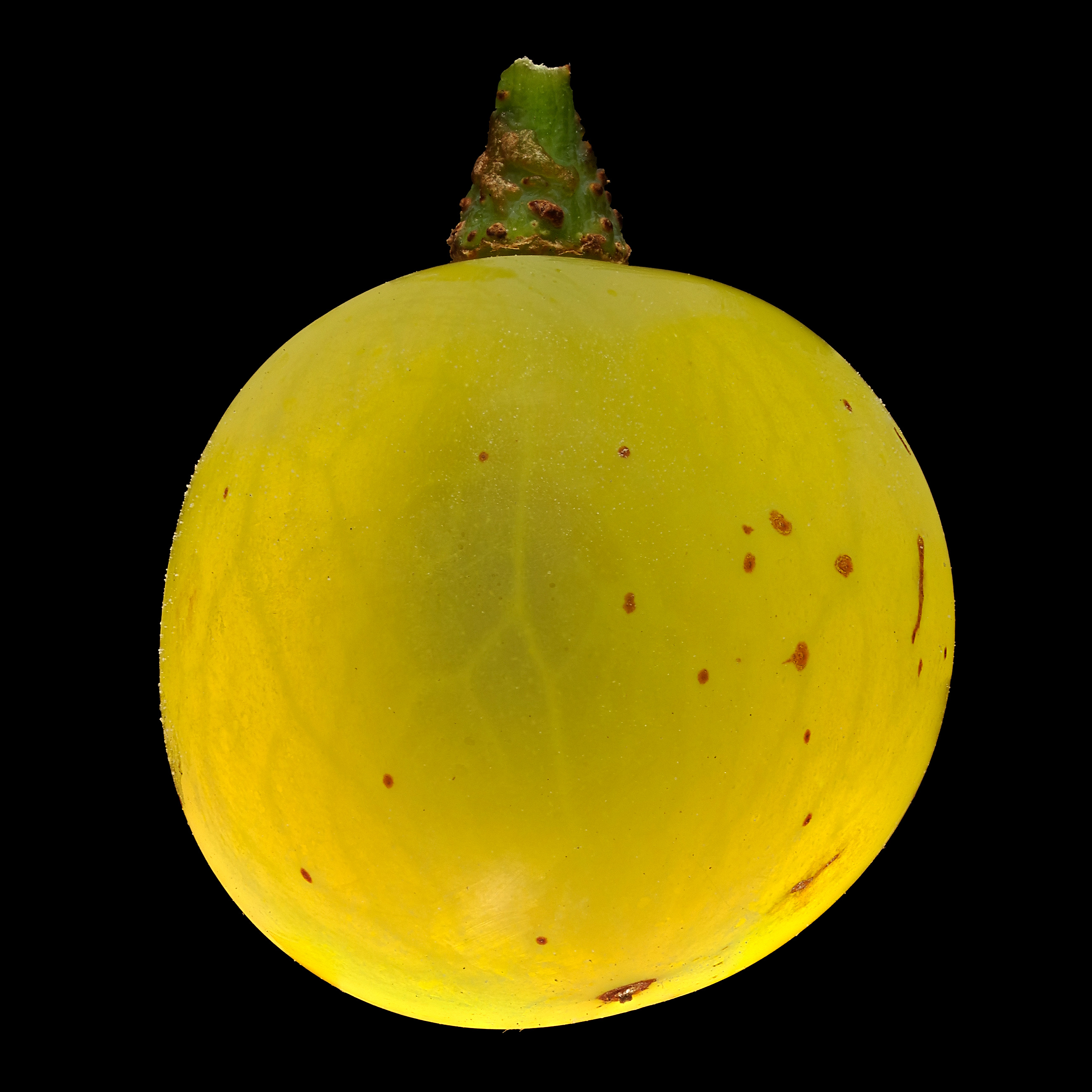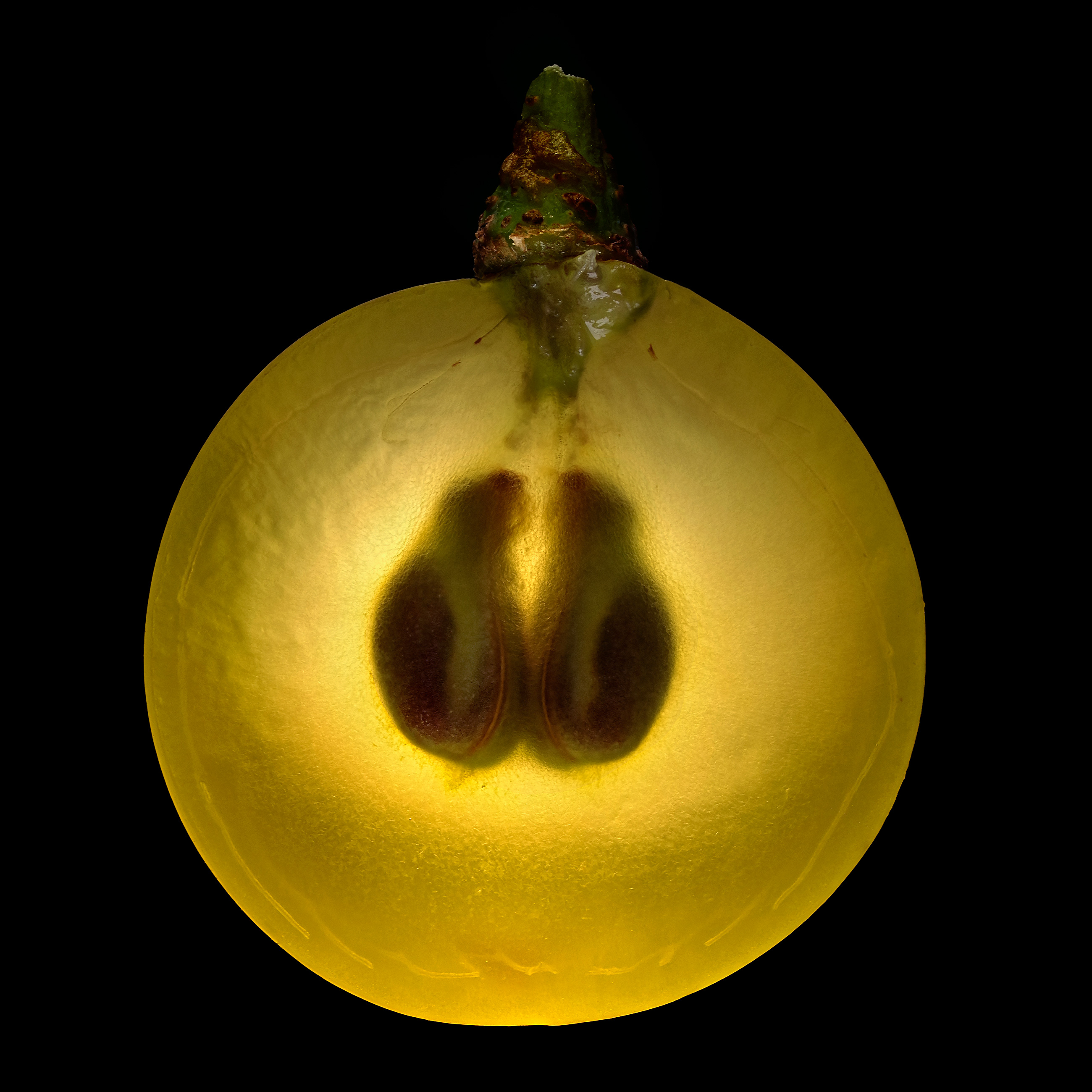Common Grape Vine (Pinot blanc): Vitis vinifera subsp. vinifera
Classical grape variety from the 14th centuryThe Pinot Blanc or Weißburgunder is a light, green or “non-coloured” vine variety that comes from Pinot Noir. It originated in the area between Lake Geneva and the Rhône Valley. The berries are compact, the fruits are green when ripe and have a high sugar content.
The grape vine is a subspecies of the vine that is mainly used for the production of wine. According to the colour of the leathery skin (the flesh is non-coloured in almost all varieties), white and red wine varieties are differentiated. Wine grows naturally as a liana, but in vineyards, due to constant trimming, it grows as a climbing shrub with shoots. Wine is one of the oldest cultivated plants of mankind, the oldest evidence dates back to 8000 BC and comes from the Near East.
The berries grow in loose infructescence and can be green, yellowish, red, purple and dark blue, some varieties have a pale wax bloom. After the vintage they are sold fresh as soft fruits (often seedless, loose, large-fruited varieties) or dried as raisins (depending on the variety also “sultanas”, “currants” and “Zante currants”). Vine leaves are edible as a vegetable, they are mostly used for wrapping e.g. spiced rice, as in the case of dolmades.
The main focus of viticulture is of course the production of wine, sparkling wine and champagne. Wine is used to make brandy, liqueur wines such as sherry, port and marsala, and vinegar. As by-products grape juice (must) and press cake (pomace, marc) are produced. Pomace brandies and wines such as Grappa, Marc de Champagne and Raki are produced from this, as well as pomace vinegar. Sometimes pomace, which is rich in minerals, vitamins and fibre, is added to bread dough and used to bake a special bread. A high quality oil is extracted from the seeds. From the pomace of the seeds, nutty tasting grape seed flour is produced, which can also be added to bread and pasta doughs.
- Edible Fruits
- Also edible Seeds Leaves
- Type of fruit Berry
- Culinary Group Stimulans Soft fruits
- Also used as Oil plants
- Taste sweet
- Trivial Names Edle Weinrebe, Echte Weinrebe, Wein, Weinbeere, Weintraube, Common grape vine, Vigne cultivée, Vigne
- Trivial Names (type) Pinot blanc, Weißer Burgunder, Weißburgunder, Pinot bianco, Klevner, Fehér Burgundi, Rulandské Bílé, Pinot bijeli, Burgundac bijeli
- Size 16 cm
- Taxonomy Vitaceae Vitis vinifera subsp. vinifera
- Origin Near East (Map)
- Donated by Weingut & Weinhaus Michel (link to donor) 2018






